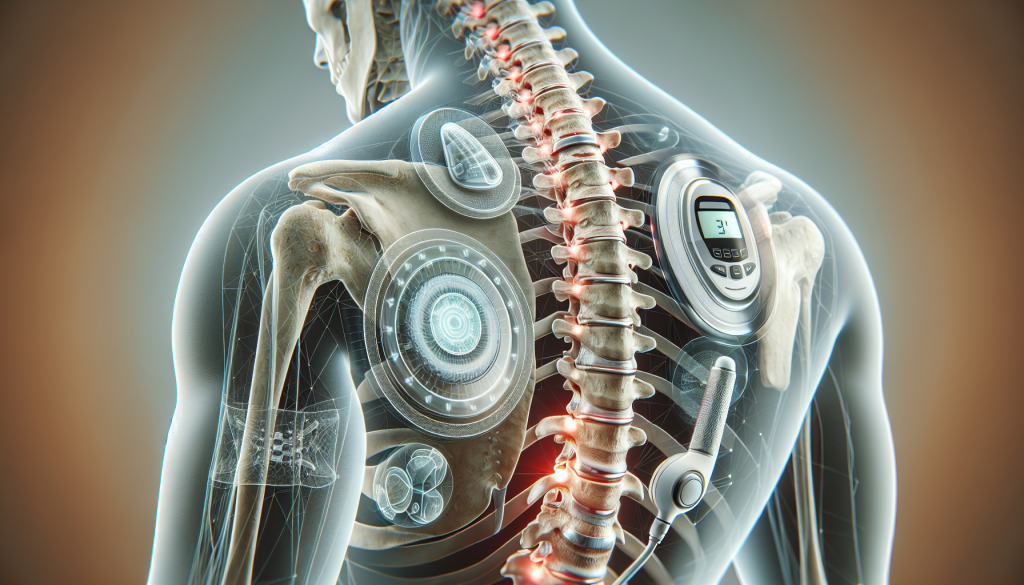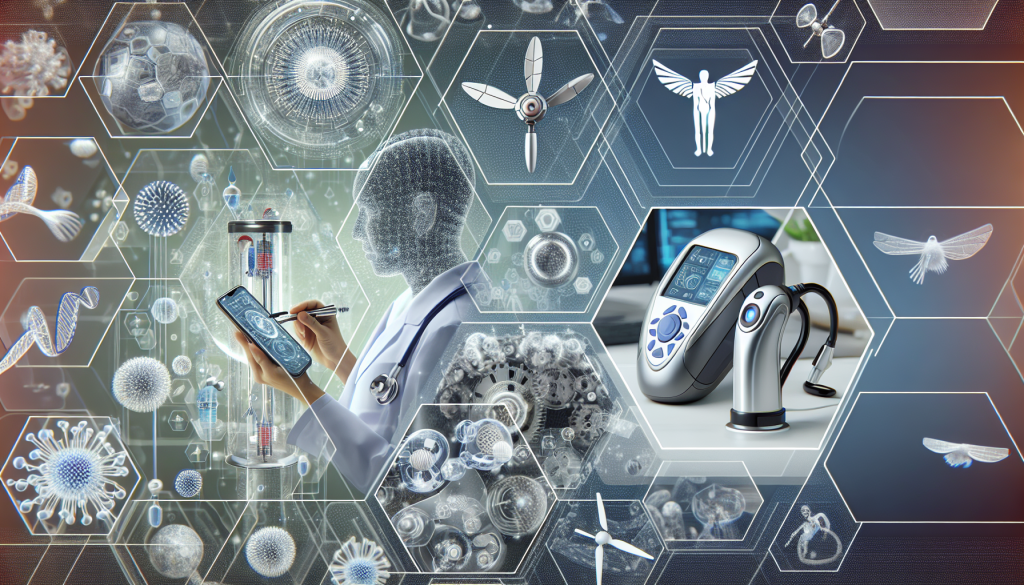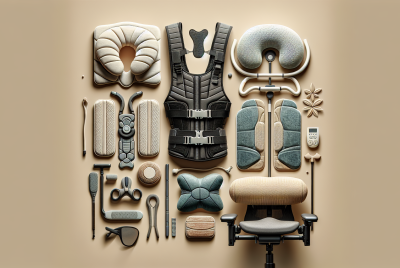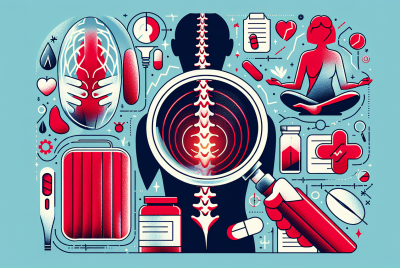Top Ways To Incorporate Devices In Back Pain Treatment
In this article, you will discover the most effective ways to integrate devices into the treatment of back pain. When it comes to managing this common ailment, incorporating devices can provide significant relief and promote faster recovery. From wearable fitness trackers to innovative electronic stimulation devices, there are a multitude of options available to help alleviate pain, enhance mobility, and improve overall well-being. By incorporating these devices into your back pain treatment plan, you can take a proactive approach to finding relief and getting back to living your best, pain-free life.

Braces and Supports
Back Braces
Back braces are devices that provide support and stability to the back, helping to alleviate back pain and promote proper posture. They are typically made of a combination of rigid and flexible materials, such as metal or plastic, and are designed to fit around the torso. Back braces are commonly used for conditions such as muscle strains, herniated discs, and spinal instability. By immobilizing and supporting the spine, they can help reduce pain and prevent further injury. Back braces come in various sizes and styles, including full-back braces, corsets, and belts, allowing individuals to choose the option that best suits their needs.
Compression Garments
Compression garments, such as back compression shirts and waist wraps, are another type of device that can be useful in managing back pain. These garments are made of elastic materials and are designed to apply gentle pressure and support to the back muscles. The compression helps improve blood circulation and reduce swelling and inflammation, providing relief from pain. Compression garments can be worn discreetly under clothing and are suitable for both everyday use and during physical activities.
Lumbar Support Belts
Lumbar support belts are specifically designed to provide support to the lower back and are often used in occupations that require heavy lifting or prolonged sitting. These belts are typically wide and made of flexible materials with an adjustable strap that wraps around the waist. The lumbar support belt helps stabilize the lower back and promotes proper spinal alignment, reducing strain on the muscles and ligaments. By providing additional support, these belts can assist in relieving back pain and preventing further injury.
Electrical Stimulation Devices
Transcutaneous Electrical Nerve Stimulation (TENS)
Transcutaneous Electrical Nerve Stimulation (TENS) devices are portable, battery-operated devices that deliver mild electrical impulses through electrode pads placed on the skin. These electrical impulses help disrupt the pain signals traveling to the brain, providing temporary relief from back pain. TENS therapy also stimulates the production of endorphins, which act as natural painkillers. TENS units come with various settings to adjust the intensity and frequency of the electrical pulses, allowing individuals to customize their pain relief experience.
Spinal Cord Stimulation (SCS)
Spinal Cord Stimulation (SCS) is a more advanced electrical stimulation therapy used for chronic back pain that has not responded to other treatments. SCS involves the implantation of a small device, similar to a pacemaker, under the skin near the spinal cord. The device delivers low-level electrical impulses to the spinal cord, which interfere with the transmission of pain signals. SCS can provide significant pain relief and improve overall quality of life for individuals with chronic back pain.
Percutaneous Electrical Nerve Stimulation (PENS)
Percutaneous Electrical Nerve Stimulation (PENS) is a procedure that combines acupuncture with electrical stimulation. During the procedure, thin needles are inserted into specific points near the affected area, and electrical currents are applied through the needles. PENS therapy helps activate the body’s natural pain-relieving mechanisms and can provide immediate relief from back pain. This treatment is generally performed by trained healthcare professionals and may be used in conjunction with other therapies for maximum effectiveness.
Heat and Cold Therapy Devices
Hot Packs
Hot packs, also known as heat packs or heating pads, are devices that provide localized heat therapy to the affected area. Heat therapy helps increase blood flow to the muscles, reduce muscle stiffness, and alleviate back pain. Hot packs can be heated using various methods, including microwaving, boiling, or activating a chemical reaction. They are typically reusable and can provide long-lasting relief. Hot packs are especially beneficial for muscle strains, spasms, and arthritis-related back pain.
Cold Packs
Cold packs, also known as ice packs or cold compresses, are devices that provide localized cold therapy to the affected area. Cold therapy helps reduce inflammation, numb pain, and constrict blood vessels to minimize swelling. Cold packs can be stored in the freezer and applied to the back for short periods of time. They are particularly effective for acute injuries, such as sprains or strains, as well as for reducing pain and swelling after physical activity.
Heating Pads
Heating pads are electrical devices that generate and emit heat for targeted heat therapy. Unlike hot packs, heating pads allow for adjustable temperature settings and provide a steady and constant source of heat. They are available in various sizes and designs, including small pads for specific areas of the back and full-size pads for more extensive coverage. Heating pads are convenient and easy to use, making them a popular choice for individuals seeking heat therapy for their back pain.
Massage Devices
Massage Chairs
Massage chairs are innovative devices that mimic the techniques and sensations of a professional massage. They are equipped with built-in motors and rollers that provide various massage techniques, such as kneading, tapping, and rolling motions. Massage chairs can target specific areas of the back, including the upper and lower back, and often come with additional features such as heat therapy and adjustable settings. Regular use of a massage chair can help reduce muscle tension, improve blood circulation, and relieve back pain.
Handheld Massagers
Handheld massagers are portable devices designed to deliver targeted massage therapy directly to the affected area. These devices typically feature vibrating or oscillating heads that can be moved along the back and provide deep tissue massage. Handheld massagers are lightweight, easy to use, and allow individuals to control the pressure and intensity of the massage. They are an excellent option for individuals who prefer a more hands-on approach to managing their back pain.
Vibrating Massagers
Vibrating massagers, also known as vibration therapy devices, use mechanical vibrations to provide therapeutic benefits to the back muscles. These devices typically feature vibrating pads or attachments that can be placed on the back. Vibrating massagers help relax tense muscles, improve blood circulation, and reduce pain and discomfort. Some vibrating massagers also come with adjustable intensity settings, allowing users to customize their massage experience based on their individual preferences.

Traction Devices
Inversion Tables
Inversion tables are devices that allow individuals to hang upside down or at an inverted angle. This position helps decompress the spine and relieve pressure on the discs and nerves, ultimately reducing back pain. Inversion therapy can also improve spinal alignment, increase blood flow, and stretch the muscles and ligaments in the back. Inversion tables typically have adjustable settings to control the degree of inversion and may come with additional features, such as padded backrests and ankle straps for added comfort and safety.
Cervical Traction Devices
Cervical traction devices are specifically designed to provide traction and stretching to the neck and upper spine. These devices typically consist of a head halter or a neck brace connected to a pulley system. By gently pulling and stretching the neck, cervical traction devices help relieve pressure on the spinal discs and nerves, alleviating neck and back pain. Cervical traction can also help improve posture and mobility in the neck region.
Lumbar Traction Devices
Lumbar traction devices are used to apply traction to the lower back and stretch the spine. These devices can be as simple as inflatable belts or more advanced, motorized devices. Lumbar traction helps create space between the spinal vertebrae, reducing pressure on the discs and nerves. By decompressing the spine, lumbar traction devices can significantly alleviate lower back pain and promote healing. It is important to use lumbar traction devices under the guidance of a healthcare professional to ensure proper technique and safety.
Exercise and Rehabilitation Devices
Back Stretchers
Back stretchers are devices designed to gently stretch and align the spine, promoting flexibility and relieving back pain. These devices typically feature a curved shape that mimics the natural curvature of the spine. By lying on a back stretcher, individuals can target specific areas of the back and apply gentle traction to relieve pressure on the discs and nerves. Back stretchers are lightweight, portable, and can be easily incorporated into daily routines for regular stretching and relaxation.
Resistance Bands
Resistance bands are versatile exercise tools that can be used to strengthen the muscles of the back and core. These bands come in various resistance levels, allowing individuals to gradually increase the intensity of their workouts as their strength improves. Resistance bands can be used to perform a wide range of exercises, including rows, pulls, and rotations, all of which help stabilize the back and prevent or manage back pain. They are lightweight, portable, and suitable for individuals of all fitness levels.
Posture Correctors
Posture correctors are devices designed to promote proper spinal alignment and improve posture. These devices are typically worn over the shoulders and around the upper back, gently pulling the shoulders back and aligning the spine. By maintaining a proper posture, individuals can alleviate strain on the back muscles and prevent or reduce back pain. Posture correctors come in various forms, including braces, belts, and straps, and can be worn discreetly under clothing for everyday use.
Pain Relief Devices
Transcutaneous Electrical Nerve Stimulation (TENS)
Transcutaneous Electrical Nerve Stimulation (TENS) devices, as mentioned earlier, are excellent pain relief devices that use electrical impulses to disrupt pain signals. TENS therapy can offer immediate relief from back pain and is a non-invasive and drug-free option for managing chronic pain. By blocking pain signals and stimulating the production of endorphins, TENS devices provide natural pain relief and promote relaxation.
Pulsed Electromagnetic Field (PEMF) Therapy
Pulsed Electromagnetic Field (PEMF) therapy is a non-invasive treatment that uses electromagnetic fields to stimulate the body’s natural healing processes. PEMF devices emit electromagnetic pulses that penetrate deep into the tissues, promoting cellular repair and reducing inflammation. PEMF therapy can help alleviate back pain by improving blood circulation, reducing muscle tension, and facilitating the healing of damaged tissues.
Ultrasound Therapy
Ultrasound therapy devices use high-frequency sound waves to deliver therapeutic heat deep into the tissues. This heat helps increase blood flow, relax muscles, and reduce pain and stiffness in the back. Ultrasound therapy can be used to treat various back conditions, such as muscle strains, sprains, and joint inflammation. It is a safe and non-invasive treatment option that can be performed in a healthcare setting or in the comfort of your own home.
Sleeping Devices
Orthopedic Pillows
Orthopedic pillows are specially designed to support the neck and maintain proper spinal alignment while sleeping. These pillows are often made of memory foam or other supportive materials and feature a contoured shape that cradles the head and neck. By providing adequate support, orthopedic pillows help alleviate strain on the neck and back, reduce snoring, and improve overall sleep quality. They are particularly beneficial for individuals with chronic neck or back pain.
Adjustable Beds
Adjustable beds are motorized beds that allow individuals to customize their sleeping positions. These beds can be adjusted to elevate the head, upper body, or lower body, providing optimal support and comfort for the back. By finding the perfect sleeping position, individuals can relieve pressure on the spine, improve breathing, and reduce back pain. Adjustable beds are especially useful for individuals with conditions such as sleep apnea, acid reflux, or spinal degeneration.
Mattresses with Lumbar Support
Mattresses with lumbar support are specifically designed to provide extra support to the lower back. These mattresses feature a reinforced support system in the lumbar region, helping to maintain proper spinal alignment while sleeping. By distributing body weight evenly and reducing pressure points, mattresses with lumbar support can alleviate back pain and improve sleep quality. They are available in various materials and firmness levels, allowing individuals to choose the most suitable option for their specific needs.
Smartphone Apps and Wearable Devices
Posture Correcting Apps
Posture correcting apps use the capabilities of smartphones to track and analyze your posture throughout the day. These apps often utilize the device’s built-in sensors or external wearable devices to monitor your body position and provide real-time feedback. By alerting you when your posture is incorrect, these apps help promote better posture habits, reduce strain on the back, and prevent the development of chronic pain.
Activity Trackers
Activity trackers, commonly known as fitness trackers or smart bracelets, are wearable devices that monitor various aspects of your physical activity, including steps taken, distance traveled, and active minutes. These devices often come with additional features such as heart rate monitoring, sleep tracking, and calorie counting. By providing insights into your daily activity levels, activity trackers can help you maintain an active lifestyle, manage your weight, and support overall back health.
Smartwatches
Smartwatches are versatile devices that can be synchronized with smartphones and provide a wide range of functionalities, including health and fitness tracking. With built-in sensors and apps, smartwatches can monitor your heart rate, track your sleep patterns, and provide reminders for physical activity. Smartwatches are useful tools for managing back pain as they can help you stay aware of your daily activity levels, provide guided workouts, and remind you to maintain good posture throughout the day.
Assistive Devices
Walking Aids
Walking aids, such as canes, crutches, or walkers, are devices that provide support and stability during walking or standing. These devices are particularly useful for individuals with back pain who may experience difficulty with balance or reduced mobility. By redistributing weight and providing additional support, walking aids can help reduce strain on the back and promote safer movement. It is important to choose a walking aid that suits your specific needs and consult with a healthcare professional for proper fitting and usage.
Grab Bars
Grab bars are safety devices that provide support and stability in the bathroom, particularly near the toilet, bathtub, or shower. These bars are typically mounted to the walls and offer individuals something to hold onto when standing up, sitting down, or maneuvering in the bathroom. By providing a secure grip, grab bars can help prevent falls, reduce strain on the back, and offer individuals with back pain increased independence and confidence.
Reachers
Reachers, also known as grabbers or reaching aids, are devices designed to help individuals reach and pick up objects without bending or stretching. These devices consist of a long handle with a gripping mechanism at the end that can be operated with the hand or a trigger. Reachers are particularly useful for individuals with back pain who may have difficulty with bending or limited mobility. By eliminating the need for excessive bending or reaching, reachers can help reduce strain on the back and make daily tasks easier and more manageable.
Incorporating devices into back pain treatment can greatly enhance the effectiveness of traditional therapies and provide additional support, pain relief, and functionality. Whether it’s through the use of braces and supports, electrical stimulation devices, heat and cold therapy devices, massage devices, traction devices, exercise and rehabilitation devices, pain relief devices, sleeping devices, smartphone apps and wearable devices, or assistive devices, there are numerous options available to aid in the management of back pain. It is important to consult with a healthcare professional to determine the most suitable devices and therapies for your specific condition, and to ensure their proper usage and safety. With the right combination of devices and treatments, individuals can find significant relief from back pain and regain control of their daily lives.




